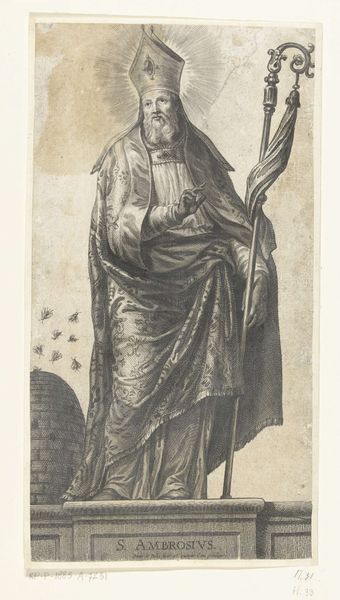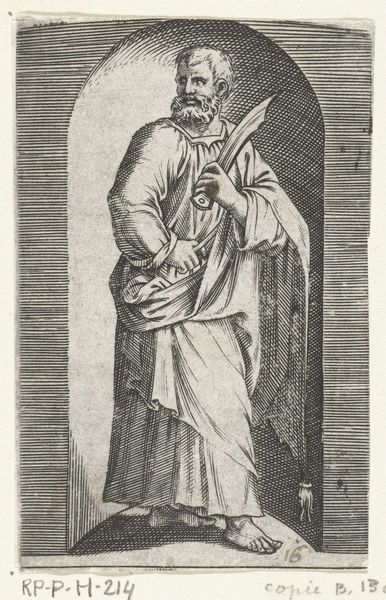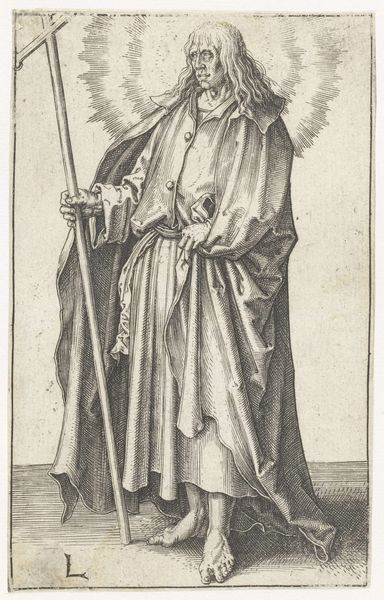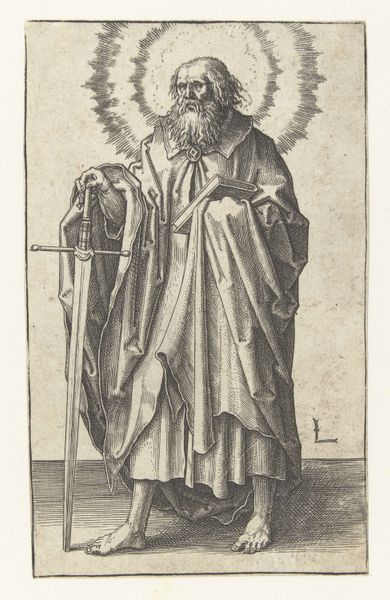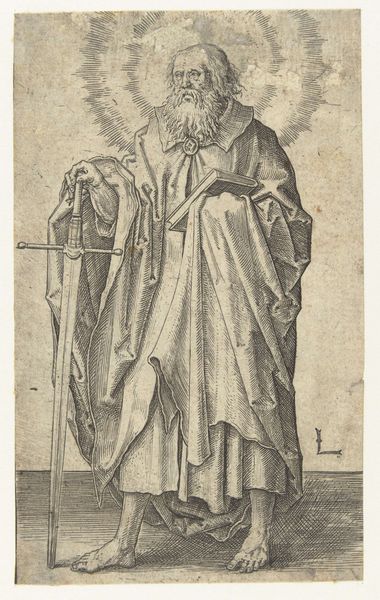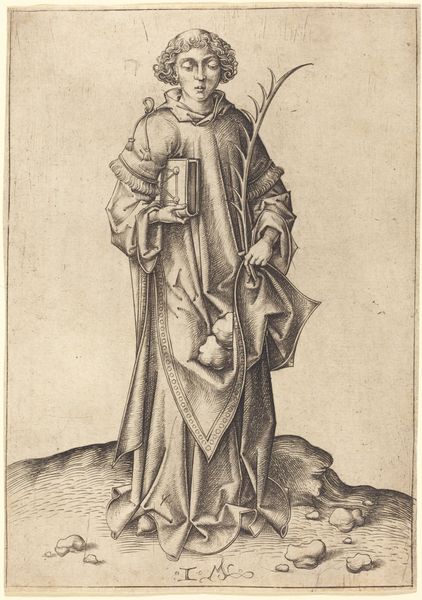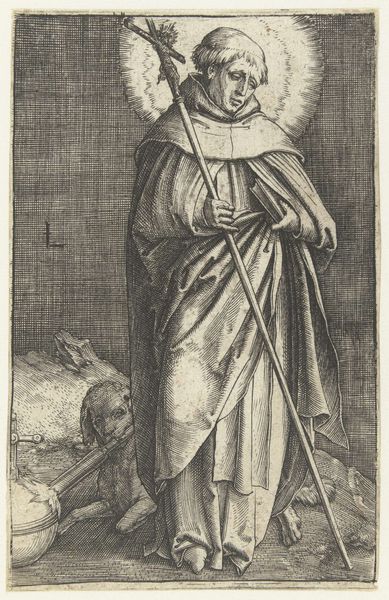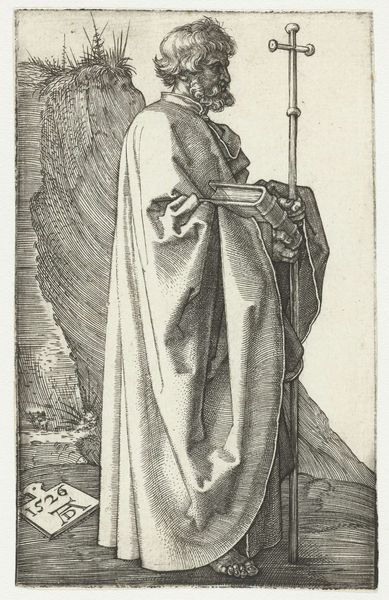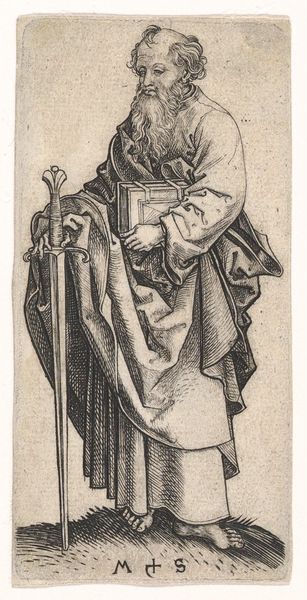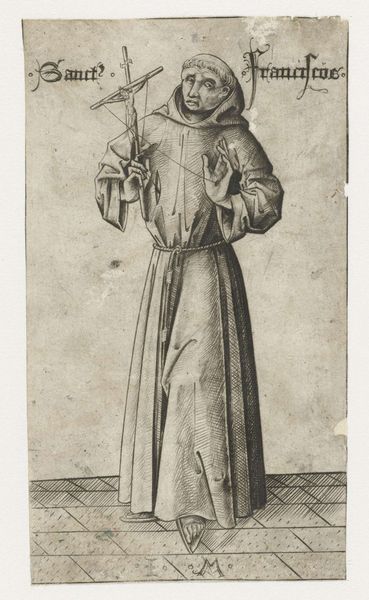
#
pencil drawn
#
light pencil work
#
shading to add clarity
#
pencil sketch
#
old engraving style
#
personal sketchbook
#
pencil drawing
#
pen-ink sketch
#
pencil work
#
pencil art
Dimensions: height 118 mm, width 72 mm
Copyright: Rijks Museum: Open Domain
Editor: This engraving, "The Apostle Bartholomew," was created by Lucas van Leyden sometime between 1508 and 1512. It’s currently held in the Rijksmuseum. What strikes me is the detail rendered through the linework - it almost looks photographic. What can you tell me about its composition? Curator: A formal analysis reveals Leyden's meticulous attention to line and form. The concentric circles behind Bartholomew create a distinct figure-ground relationship and, crucially, they are not representational, but structural. Notice the contrasts in texture: the smooth planes of the halo versus the intricate folds of his robes. How does this juxtaposition influence your reading? Editor: I see what you mean about the figure-ground, as a separation. And the heavy robes contrast against the flat halo. I suppose that flatness helps accentuate depth in other parts of the work, like the folds. So, these elements draw my eye to certain areas, emphasizing the saint's presence, despite his gaze facing elsewhere? Curator: Precisely. It directs our attention, doesn’t it? Also, observe the carefully modulated light and shadow, achieved purely through the density and direction of lines. The artist's virtuosity lies in this command of technique, achieving remarkable dimensionality in a two-dimensional medium. Editor: That's a fantastic point. Looking closely, it's not just about representing the subject but exploring what the engraving medium itself is capable of. Curator: Indeed. By focusing on the internal structure, we come to appreciate its artistic ingenuity. A fresh look for us both.
Comments
No comments
Be the first to comment and join the conversation on the ultimate creative platform.
